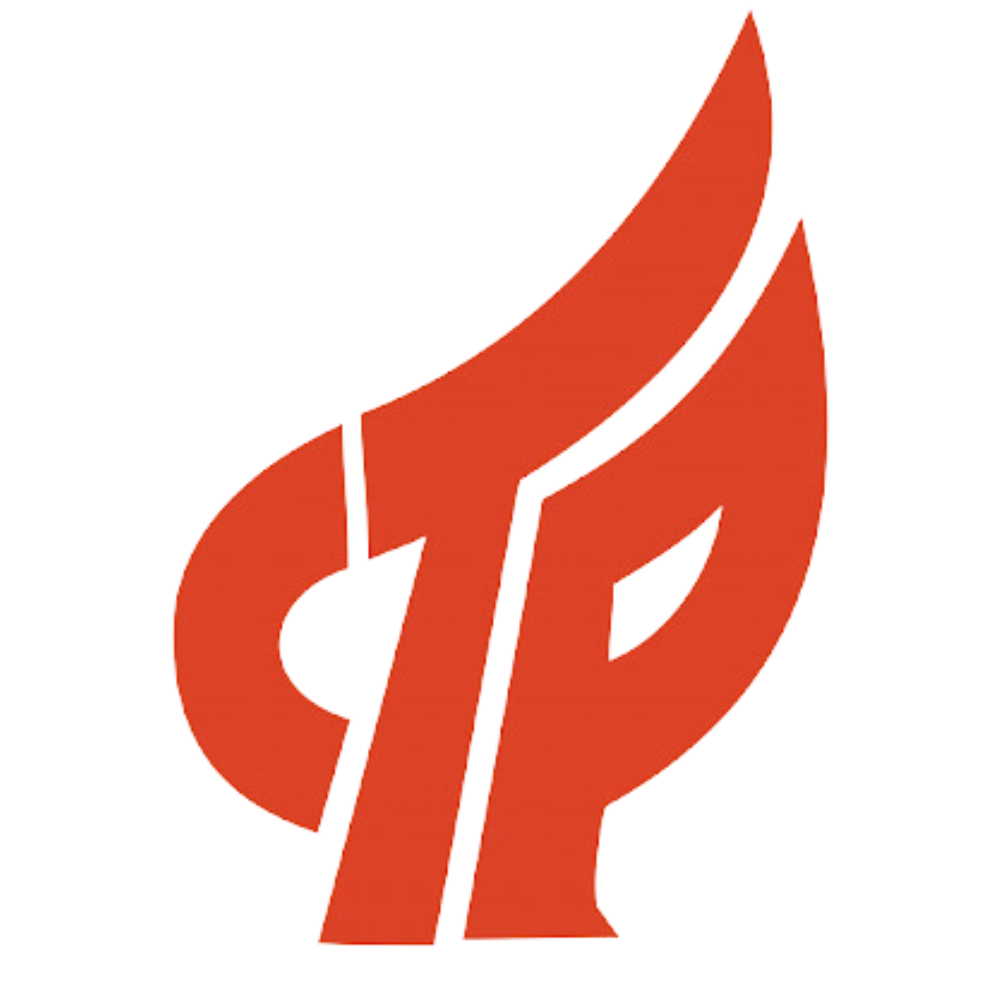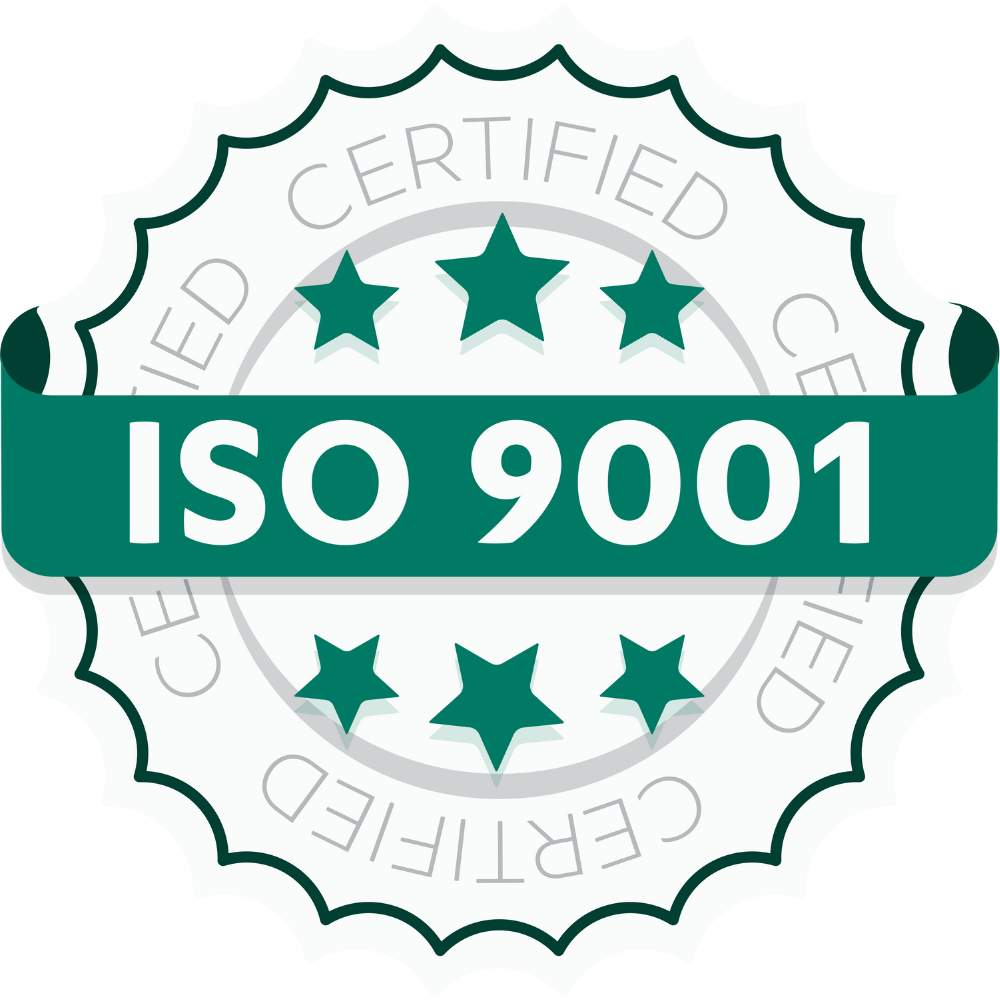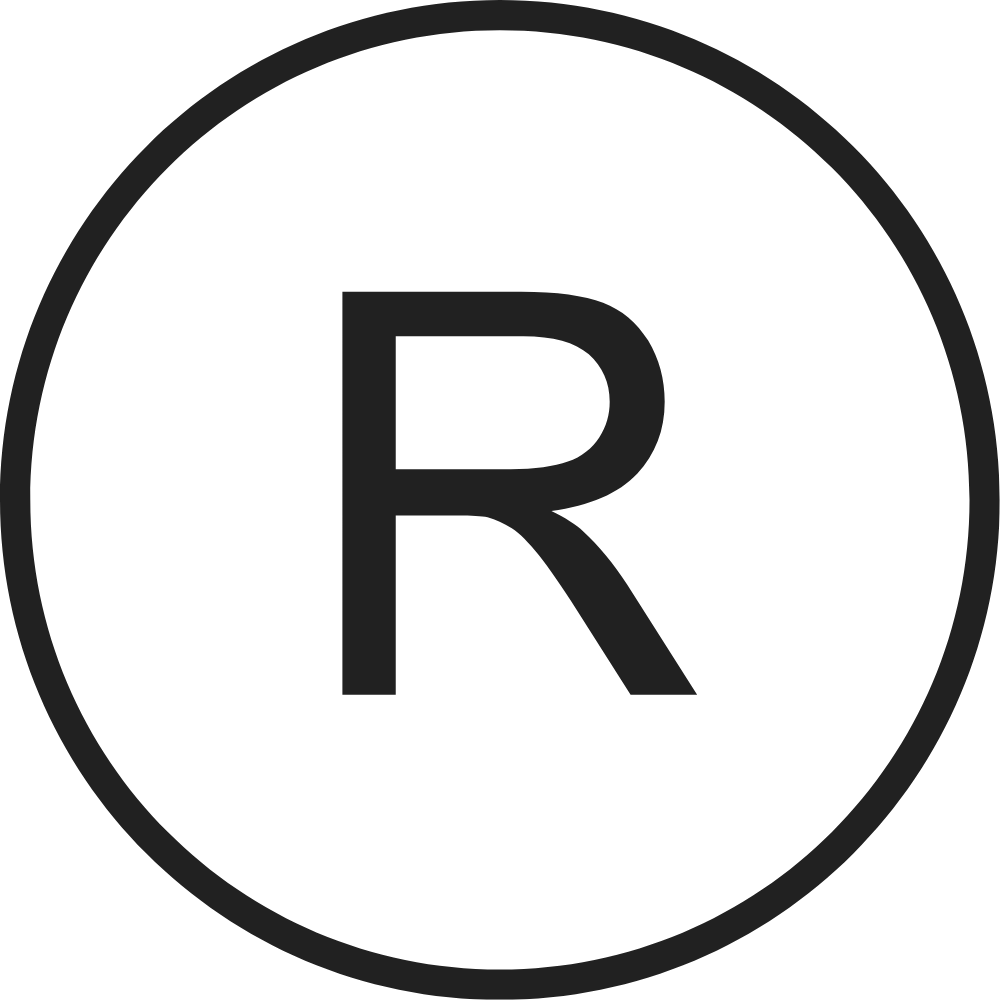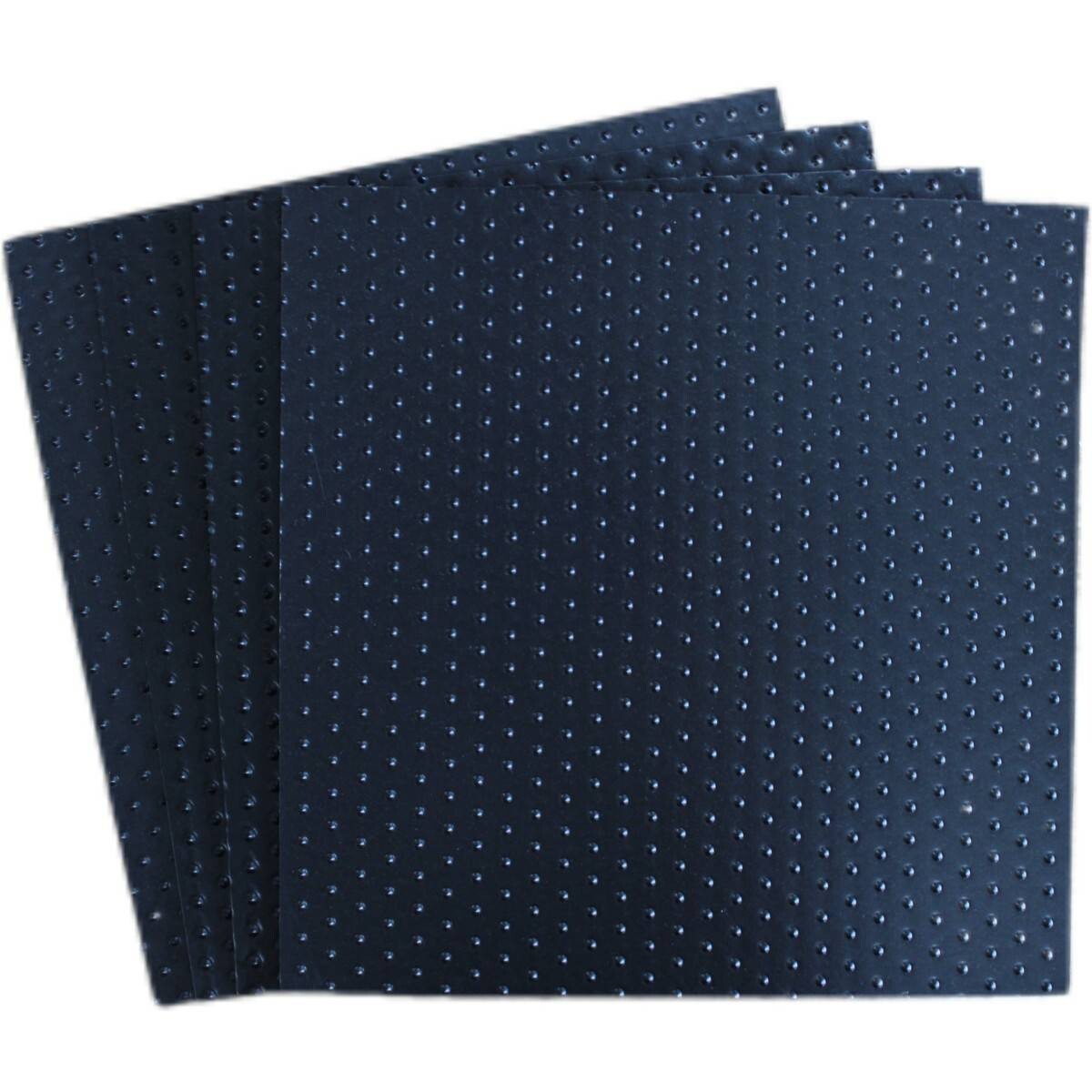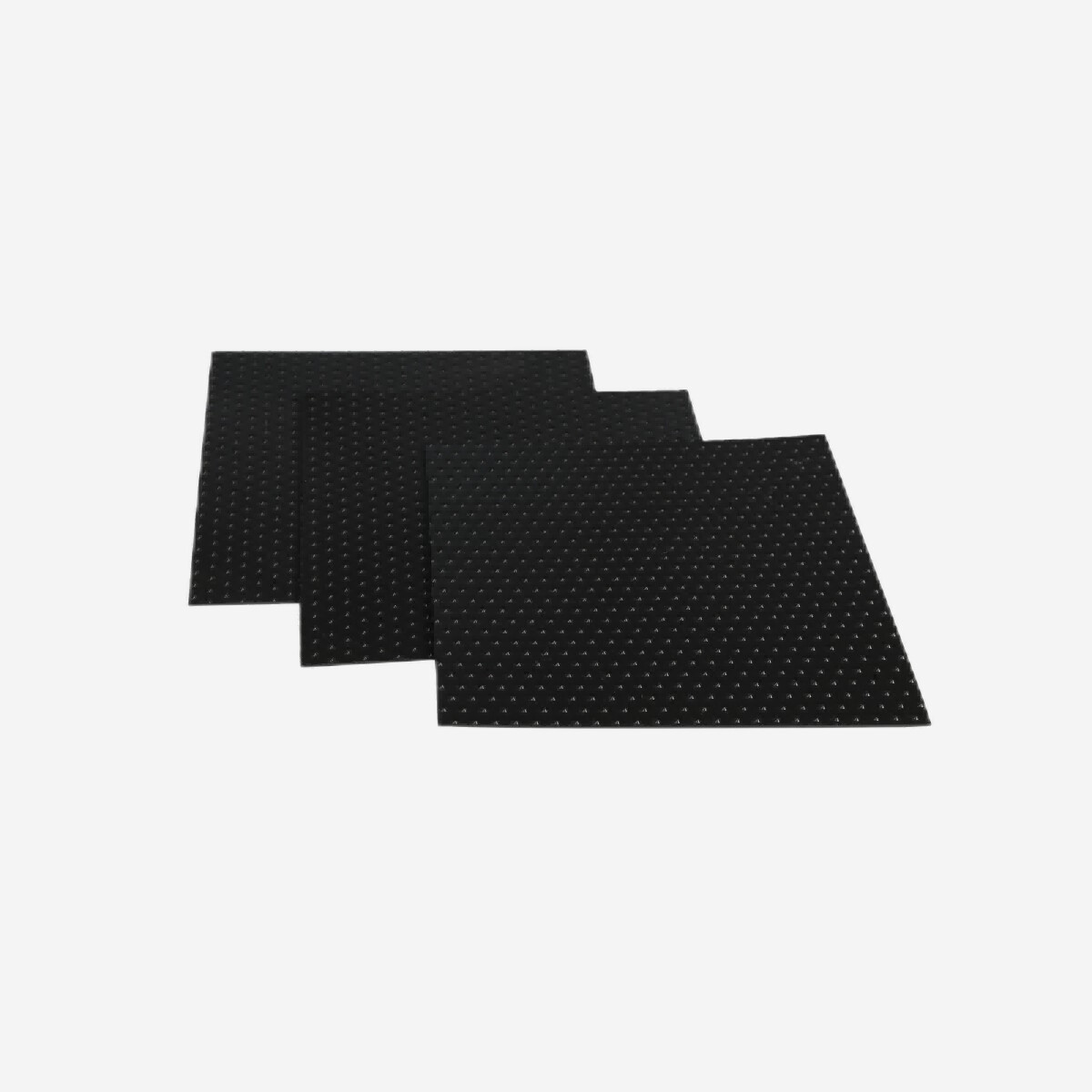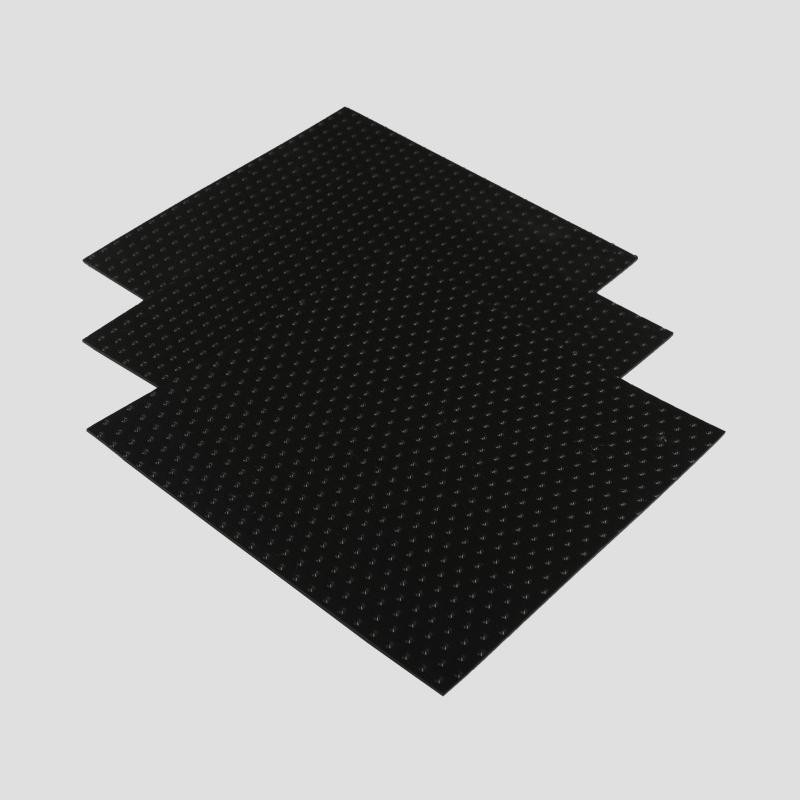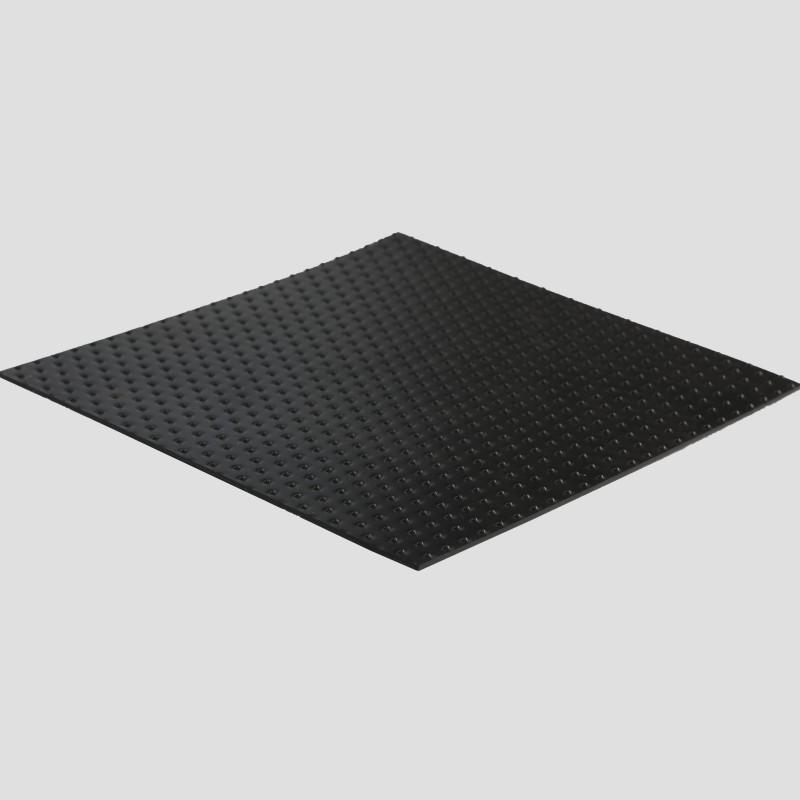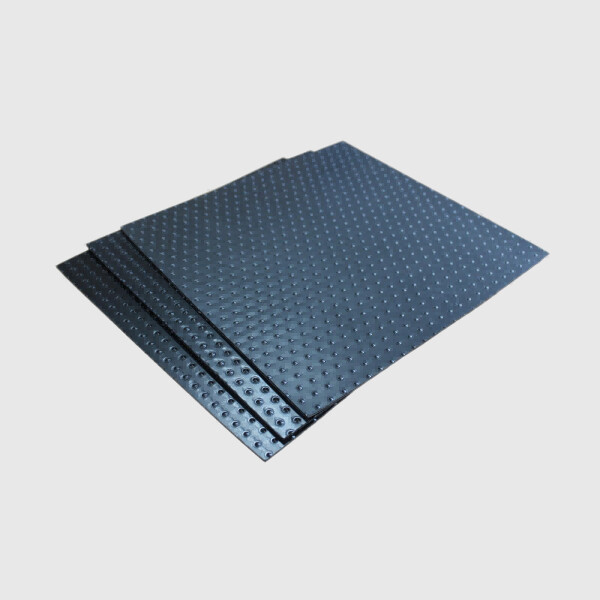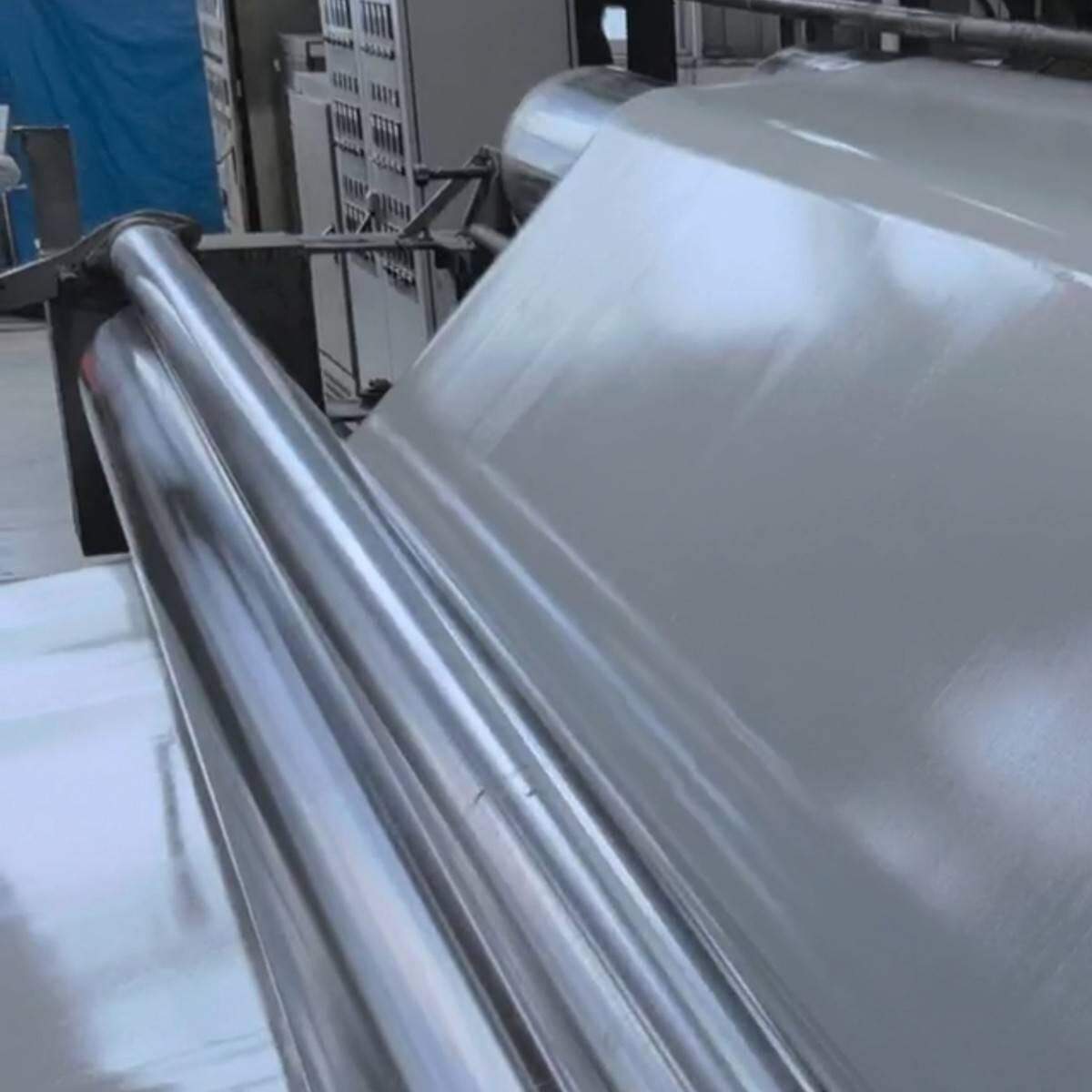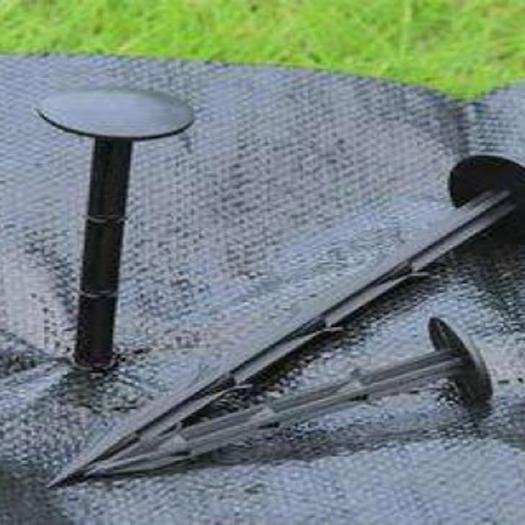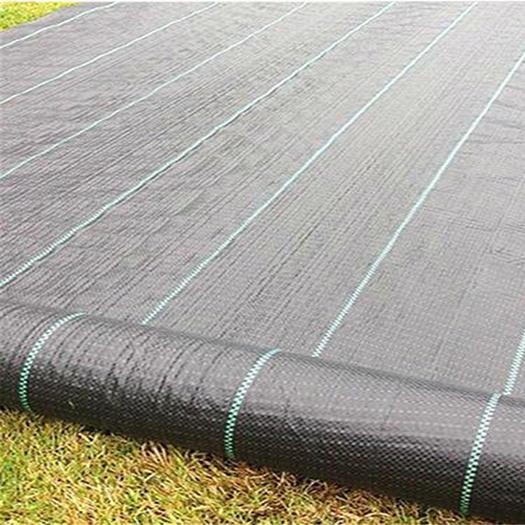Product Overview
The Column-point Geomembrane is a high-performance geosynthetic material designed with raised column-like structures on its surface, which provide enhanced friction, facilitate drainage, and prevent slippage. This unique design is specifically engineered to improve soil retention and water flow in applications such as landfills, reservoirs, and construction sites. The Column-point Geomembrane combines excellent chemical resistance, UV stability, and high mechanical strength, making it a durable solution for demanding environmental and containment projects. It is particularly useful in applications where superior performance under stress, excellent drainage properties, and resistance to punctures and tears are critical.
Product Features
- Column-Like Surface Structure: The geomembrane features raised, column-like points that create a textured surface, improving friction and preventing slippage in soil and construction applications.
- Enhanced Drainage Performance: The unique surface structure facilitates the efficient drainage of water, helping to reduce water accumulation and improve the performance of drainage systems.
- High Tensile Strength: Designed to withstand mechanical stress, the geomembrane offers excellent tensile strength, ensuring its stability and longevity in challenging environments.
- UV and Weather Resistance: Made from high-density polyethylene (HDPE), the material is resistant to UV degradation, ensuring long-term performance even when exposed to sunlight.
- Chemical Resistance: The Column-point Geomembrane is highly resistant to a wide range of chemicals, making it suitable for applications in landfills, mining, and industrial sites where exposure to harsh chemicals is common.
- Durability: The robust construction ensures the geomembrane maintains its integrity over time, even under extreme pressure and in harsh environmental conditions.
- Versatility: Suitable for a wide range of applications, including waste containment, water storage, and infrastructure development.
Product Specifications
- Material: High-density polyethylene (HDPE), offering superior mechanical properties and resistance to environmental degradation.
- Thickness: Available in a range of thicknesses from 0.5 mm to 3.0 mm, depending on specific project requirements and expected loads.
- Width: Standard roll widths are typically from 4 meters to 8 meters, with custom widths available upon request.
- Length: Rolls generally come in lengths of 50 meters to 100 meters, but custom lengths can be provided based on project specifications.
- Tensile Strength: Typically ranges from 15 to 35 MPa, ensuring resistance to mechanical stress during installation and operation.
- Elongation at Break: Generally ranges from 10% to 15%, providing flexibility and durability under tension.
- Permeability: Extremely low permeability (less than 1 x 10^-13 cm/s), ensuring efficient water containment and preventing leakage.
- Color: Usually black for UV resistance, though other colors may be available for specific applications.
Applications
- Landfills: Used as a lining system for waste containment, leachate collection, and groundwater protection in landfill sites.
- Reservoirs and Ponds: Applied as a waterproof liner for reservoirs, ponds, and water storage systems to prevent water loss and contamination.
- Construction Sites: Utilized in construction projects requiring soil stabilization, slope protection, and drainage, particularly in locations prone to water accumulation.
- Mining Operations: Perfect for use in mining applications, including tailings ponds, heap leaching, and other containment solutions.
- Water and Wastewater Treatment: Used in wastewater treatment plants for containment of sludge and in managing the flow of water in sewage and effluent management systems.
- Agriculture: Suitable for agricultural ponds, irrigation systems, and farm-based containment applications to prevent water loss and contamination.
- Infrastructure Projects: Ideal for use in roads, tunnels, and other infrastructure projects where water drainage and soil stabilization are critical.
Construction Recommendations
Site Preparation: Ensure that the installation site is free from sharp objects, rocks, or any debris that may damage the Column-point Geomembrane. The surface should be smooth and compacted to provide a stable foundation for the membrane.
Installation Method: Unroll the geomembrane carefully, avoiding any sharp bends or creases that could weaken the material. The rolls should be laid out with minimal tension, and the column-like structures should face upwards to ensure effective drainage and friction.
Seam Welding: The seams of the Column-point Geomembrane should be welded using extrusion or wedge welding techniques. Proper welding is crucial to ensure a strong, leak-proof bond between adjacent sheets. Verify seam quality with tests such as air or vacuum testing.
Protection During Installation: Protect the geomembrane from punctures during installation by using a protective layer, such as sand or geotextile fabric, to prevent damage from equipment or sharp objects.
Backfilling and Covering: Once the geomembrane is in place, cover it with a protective layer, such as soil or gravel, to shield it from UV exposure, physical damage, and environmental stress. The backfill should be compacted gently to avoid applying excessive pressure on the membrane.
Inspection and Maintenance: Regularly inspect the geomembrane for signs of wear, punctures, or deformation. In case of damage, promptly repair the affected area using appropriate welding or patching methods. Regular monitoring is particularly important in high-load or high-water environments.
FAQ
- What can you buy from HONGYUE?
Geogrid, Geomembrane, Geocell, Geotextile and other geosynthetic materials.
- What you can expect from HONGYUE?
Competent and knowledgeable technical engineers .
Customized service according to engineering requirements .
Complete solutions for product design, delivery and installation in construction projects .
Offer various complementary product portfolio and contract project.
- How can HONGYUE guarantee quality?Always a pre-production sample before mass production;
Always final Inspection before shipment - What is your sample policy?
We can provide the sample free, you just pay for the transportation freight then you can get 3-5 days.
- What is the services can HONGYUE provide?Accepted Delivery Terms: FOB,CFR,CIF,EXW,DDP,Express Delivery,and so on ;
Accepted Payment Currency:USD,CNY;Euro;and so on ;
Accepted Payment Type: T/T,L/C,MoneyGram,Credit Card,PayPal,Western Union,Cash - Are you manufacturer or trading company ?
We are a professional manufacturer
- How about your delivery time?The specific delivery time depends on the items and the quantity of your order.
Inquiry about this product
Related Recommendations
If there is no accurate search result, please contact us and we will respond within 24 hours.

